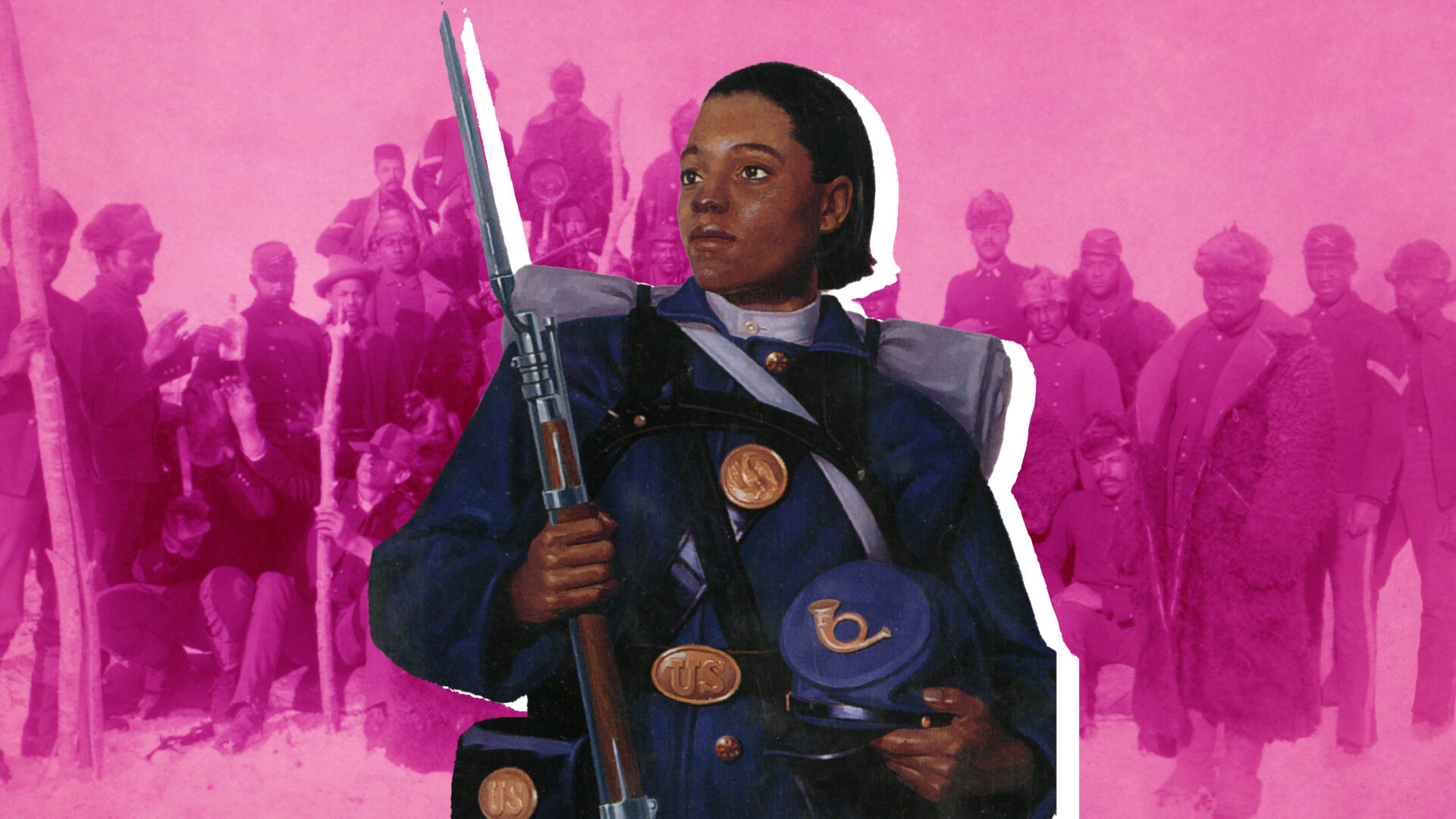
Mulan may have a Disney film about her, but Cathay Williams’ life was the real movie.
In 1844, Cathay Williams was born in Independence, Missouri to an enslaved mother and a free father. According to NPS, Williams grew up as a house slave for a wealthy planter until his death, on the Johnson plantation, found on the outskirts of Jefferson City, Missouri. The article further states that in 1861, Union forces occupied Jefferson City during the early stages of the Civil War and captured slaves were selected as contraband, many serving as cooks, laundresses, or nurses. At just 17 years old, Williams served under the service of General Philip Sheridan as an Army cook and washerwoman, accompanying the infantry all over the country.
By the time the Civil War ended, Williams was only 22 years old, a robust age to fool a country.
Despite the prohibition against women serving in the military, Williams enlisted in the U.S. Regular Army under the pseudonym of “William Cathay” on November 15, 1866. At the time, the Army did not require full medical exams, allowing Williams to successfully pass the cursory medical examination which would have outed her as a woman. Williams was then sent to the 38th U.S. Infantry Regiment, one of six segregated Black infantry regiments, also known as “Buffalo Soldiers.”
Making history wasn’t exactly an accolade that Williams sought after, but it kept occurring. While serving in the 38th U.S. Infantry Regiment, she became the only woman to serve in the U.S. Army as a Buffalo Soldier. During her time in the infantry, Williams’ primary responsibility was protecting the construction of the intercontinental railroads, along with maintaining confidentiality. It was revealed that Williams disclosed her secret, later mentioning to the St. Louis Daily Times, “The regiment I joined wore the Zouave uniform and only two persons, a cousin and a particular friend, members of the regiment, knew that I was a woman. They never ‘blowed’ on me.”
However, the ever changing military profession sent Williams to multiple states within a few months. According to Legends of America, on February 13, 1867, Williams saw the military post of Jefferson Barracks, Missouri, but by September, she had already marched to Fort Riley, Kansas, Fort Harker, Kansas, and lastly, Fort Union, New Mexico, more than 500 miles away. On October 1st, her regiment arrived at Fort Cummings, New Mexico, protecting miners and traveling immigrants from Apache attacks for eight months.
Despite her determination to complete her enlistment, Williams contracted smallpox, shortly after enlisting in the Army. After recovering, she rejoined the 38th in New Mexico for the railroads’ east-west continental connection. While there, her body began to show signs of strain possibly due to the effects of smallpox, the heat, or the years of marching. Due to her frequent hospitalizations, the post surgeon eventually discovered that she was a woman and informed the post commander. On October 14, 1868, Private Cathay was honorably discharged by her commanding officer, Captain Charles E. Clarke. As reported by NPS, the official Army paperwork made no mention of Cathay’s real gender, though she was given a disability discharge, citing a “feeble habit. He is continually on sick report…”
Following her discharge, Williams worked as a cook at Fort Union, New Mexico and later moved to Pueblo, Colorado. After finding love, Williams’ marriage ended poorly when she had her husband arrested for stealing her money and a team of horses. Around the age of 48, Williams started over in Trinidad, Colorado, where she worked as a seamstress, where her story started to gain attention. During this time, a reporter from St. Louis heard rumors of an African-American woman who served in the army and came to interview her. Her life and military service narrative was published in the St. Louis Daily Times on January 2, 1876, with a quote of, “I wanted to make my own living and not be dependent on relations or friends.”
Around 1890, Williams entered a local hospital and applied for a disability pension based on her military service, says NPS. Though there was a precedent for granting pension to female soldiers, Williams’ request was denied. In September 1893, a doctor examined Williams and claimed that she suffered from neuralgia and diabetes. Despite walking with a crutch and having all of her toes amputated, she did not qualify for disability payments. Although the exact date of her death is unknown, it is believed that she died shortly after being denied.
Cathay Williams, who was illiterate, left no diaries or letters. Yet, her legacy of breaking barriers for women and refusal to be forgotten still remains. We thank you, Cathay.
About Desjah: A Brooklyn girl keeping it real in LA, Desjah Altvater is a writer for Girls United who loves to dissect culture and entertainment. She also writes for Her Agenda and Insider, aiming to uncover interesting and underrepresented stories in the media.